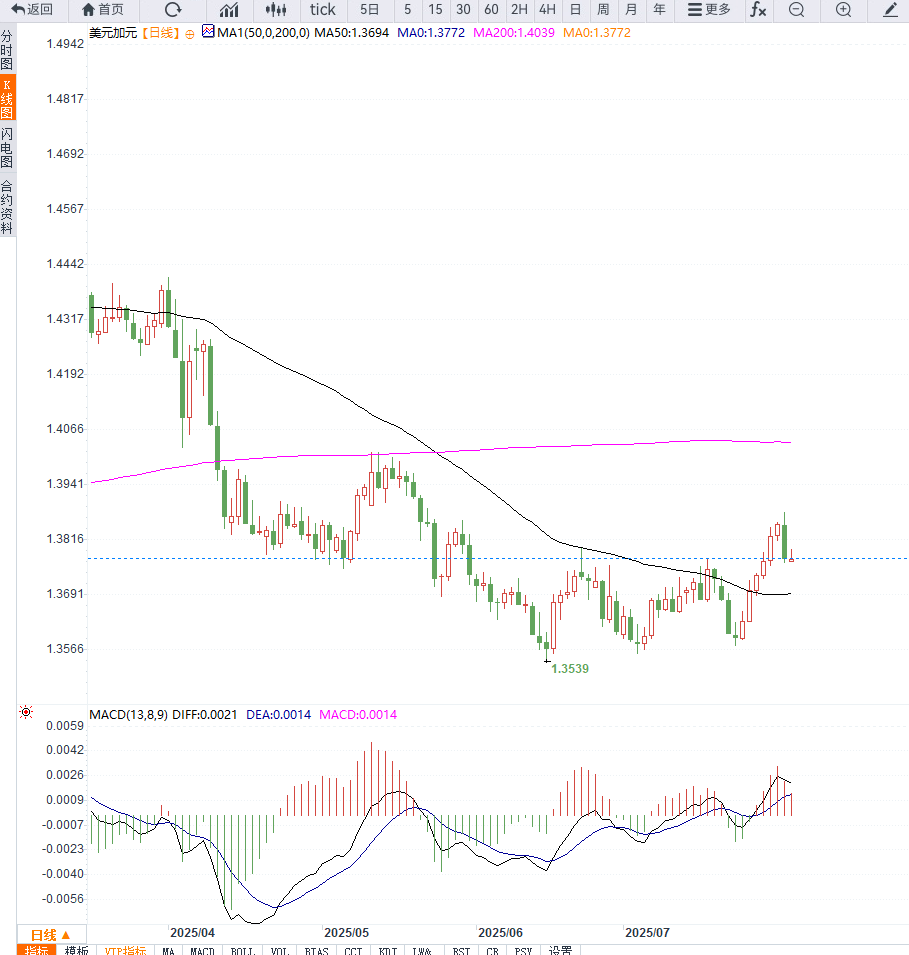Weak US employment data triggered a decline in the US dollar, while lower oil prices limited the Canadian dollar's gains. USD/CAD remained volatile below 1.3780.
2025-08-04 15:08:20
Last Friday, the U.S. Bureau of Labor Statistics (BLS) announced that non-farm payrolls increased by only 73,000 in July, far below the market expectation of 110,000. The previous figure was also revised down significantly from 147,000 to 14,000. As expected, the unemployment rate rose to 4.2%.
In addition, the US ISM Manufacturing PMI fell to 48.0 in July, remaining below the boom-bust line for two consecutive months, indicating weakening economic momentum. "These data have reinforced market bets on a September rate cut by the Federal Reserve, with the interest rate futures market pricing in a 95% probability of a rate cut."

The market expects a cumulative interest rate cut of more than 63 basis points this year, which will continue to suppress the US dollar and put pressure on USD/CAD to consolidate below 1.38.
OPEC+'s recent announcement to increase production by 547,000 barrels per day in September has fueled concerns about ample global supply, sending oil prices lower. WTI crude oil fell to around $67, while Brent crude oil dipped below $69.
"As a major oil exporter, Canada's economy is highly dependent on energy exports, and weaker oil prices directly weaken the performance of the Canadian dollar." Therefore, although the US dollar has fallen, the Canadian dollar's upside is limited, providing support for USD/CAD.
The daily chart shows that USD/CAD is fluctuating downward in the short term, but is still in a bullish channel overall. If it falls below the 1.3750 support level, it may open up further room for a correction to the 20-day moving average near 1.3685.
The upper resistance is around 1.3840, and after breaking through, it is expected to retest the previous high of 1.3895. The technical indicator RSI fell slightly but is still above 50, and the short-term trend is neutral.

Editor's opinion:
The current trend of USD/CAD is constrained by two major macroeconomic factors: on the one hand, weak US economic data has strengthened expectations of interest rate cuts, and the US dollar is unlikely to regain its strength in the short term; on the other hand, the sharp decline in oil prices has weakened support for the Canadian dollar, limiting the downward space for the exchange rate.
In the short term, the currency pair may remain range-bound between 1.3750 and 1.3840. Close attention should be paid to the US ISM Services PMI released on Tuesday and subsequent oil price trends to determine the next direction of the exchange rate.
- Risk Warning and Disclaimer
- The market involves risk, and trading may not be suitable for all investors. This article is for reference only and does not constitute personal investment advice, nor does it take into account certain users’ specific investment objectives, financial situation, or other needs. Any investment decisions made based on this information are at your own risk.





















